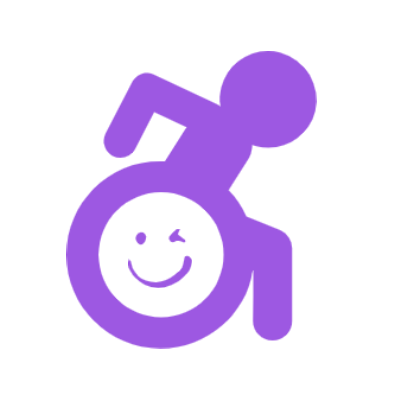Japan’s public transportation network is highly efficient and punctual. It also provides excellent accessibility services for wheelchair users within metropolitan areas and between large cities.
Apps and websites to help you plan wheelchair-accessible routes:
- Navitime – chose “wheelchair-accessible” under preferred route
- Google Maps – set trip options to “wheechair-accessible”
Bullet trains (Shinkansen)
It is highly recommended that you reserve wheelchair-accessible seats, whether you purchased a travel pass or not; only a few exist on each train. It’s also advised not to wait until the departure time to book them, as the lines at the JR offices can be long, especially during rush hours. The reservation process takes a while, as they need to coordinate assistance and other requirements. Therefore, be very specific about your needs and triple-check everything to ensure a smooth journey. Don’t assume that because you’re a wheelchair user, the staff member will make the connection and automatically reserve a wheelchair-accessible seat option for you.
Lastly, do not buy first-class/green car tickets, as there are no dedicated seats for wheelchair users in Green cars.
Two types of seats are available for wheelchair users on bullet trains: regular seats with extra space for the wheelchair or multi-purpose rooms. The first option is a two-seat row instead of a three-seat row, which allows you to dock your wheelchair and transfer to a regular seat or stay in your wheelchair. The multi-purpose private room has a two-seat bench and enough space for one wheelchair. If you are traveling in a small group, I recommend this option. You can lock the door, talk on the phone (which isn’t acceptable around other passengers), eat, drink, and stretch your body without worrying about train etiquette.
On travel day, make sure to arrive at the station at least 20 minutes before the departure time. Once you get there, ask for assistance at the gate using the word “slope” instead of “ramp.” A staff member will accompany you to your seat and arrange assistance at the destination or transfer station. This process is efficient and helpful, especially since some stations can be large and confusing.
The trains are equipped with universal restrooms.




Local trains
Navigating through large train stations can be pretty challenging for people who use wheelchairs. Some station entrances do not have elevators, which leads to long and inconvenient detours. You have the option to use assistance or board independently. If you prefer assistance with finding your platform and boarding, ask at the gate, and a staff member will accompany you, help you board via a ramp, and arrange for assistance at the destination and transfer stations. However, please note that this might take longer than traveling independently. It may take a few minutes for the staff member to arrive or contact the destination station’s staff.
My recommendation is to use assistance the first time. This will help you determine if self-boarding is feasible, considering factors like the gap and height differences between train and platform.
At least one car on each train has dedicated priority seats and wheelchair spaces; you’ll see it marked on the platform.
It would be best to avoid rush hour when trains are crowded: 8-9 a.m. and shortly after 5 p.m.
Please remember the following standard etiquette when inside the train:
– Stay behind the yellow line while waiting to board the train.
– Wait for passengers to exit before entering.
– Do not eat while on the train.
– Refrain from talking on your mobile phone.






City buses
Most city buses are marked with a blue wheelchair sign, are equipped with ramps at the second door, and are accessible for people using wheelchairs. The newer buses are sidewalk-level and are easier to board. The older buses have a higher floor level, and their ramps can be pretty steep, which might make it more challenging to board, especially for those with manual wheelchairs.
To board the bus, get the driver’s attention by signaling them. They will then pull out the ramp and assist you in getting on board. In most cases, the driver will fold several seats to make room for you. When you are ready to get off the bus, inform the driver of your destination, and they will assist you in getting off at the right stop.
Inter-city buses are not wheelchair-accessible.



Taxis
Wheelchair-accessible taxis are common in Japan, but it’s best to reserve them in advance.
My only experience was in Kyoto with MK Taxi, which was good.



